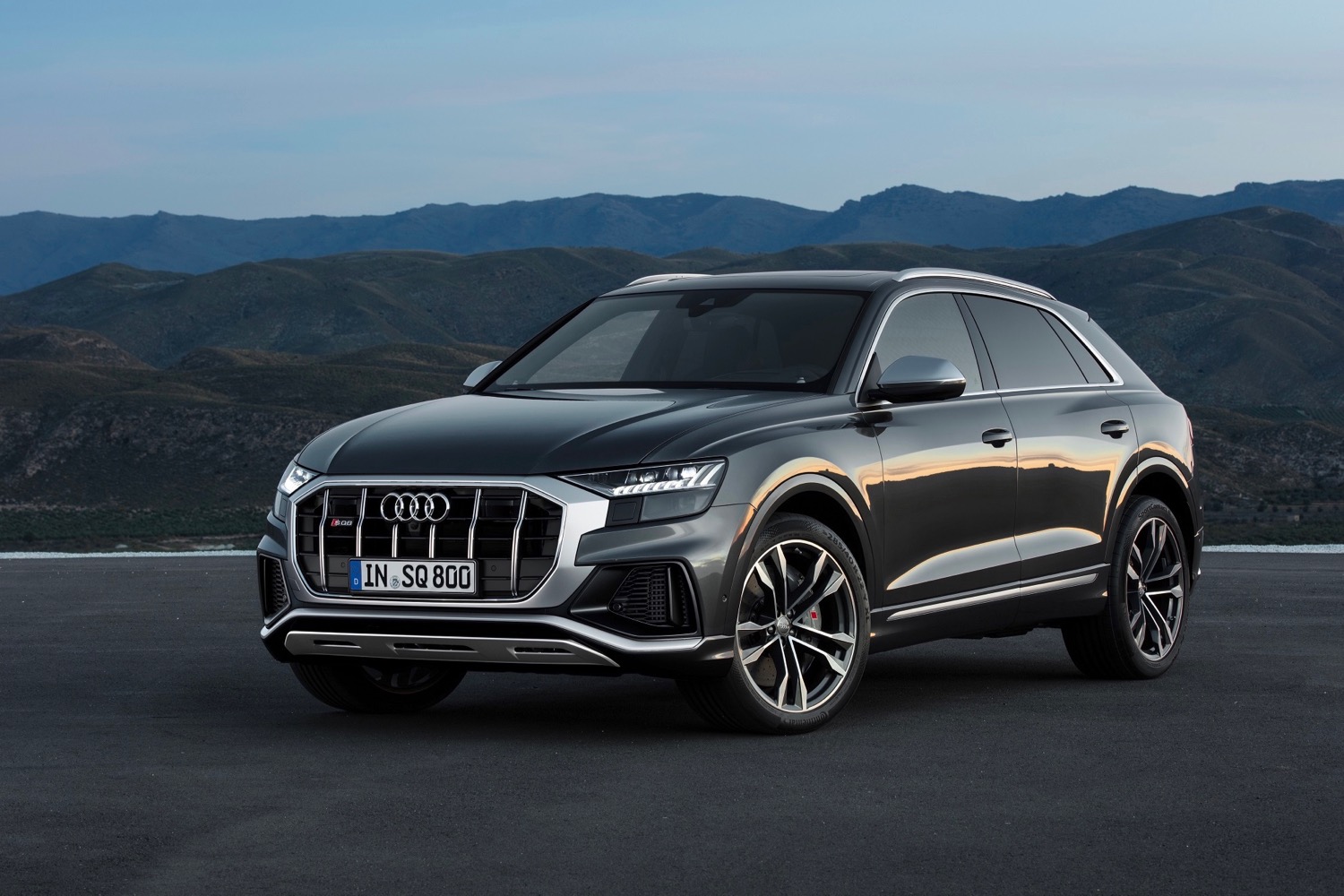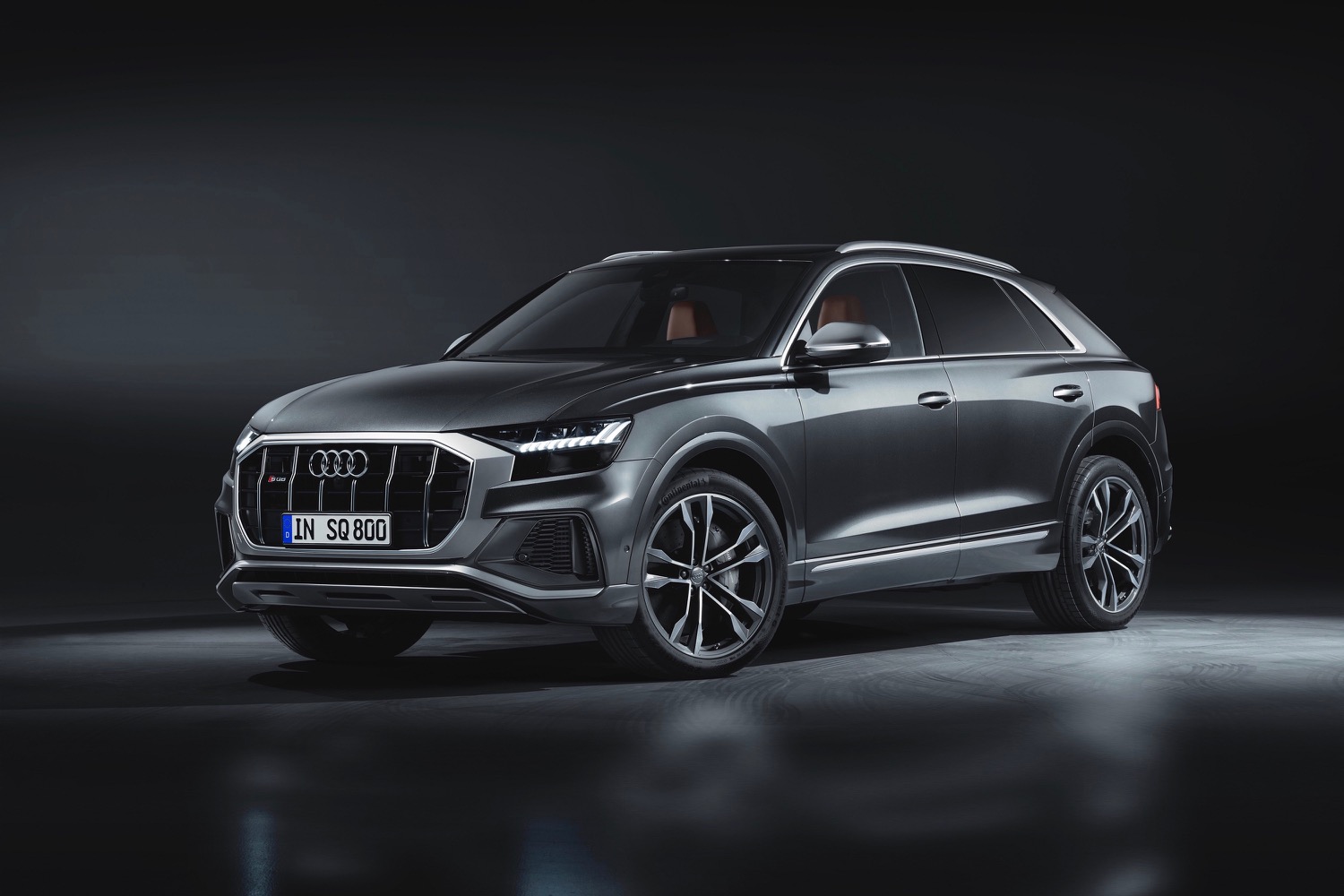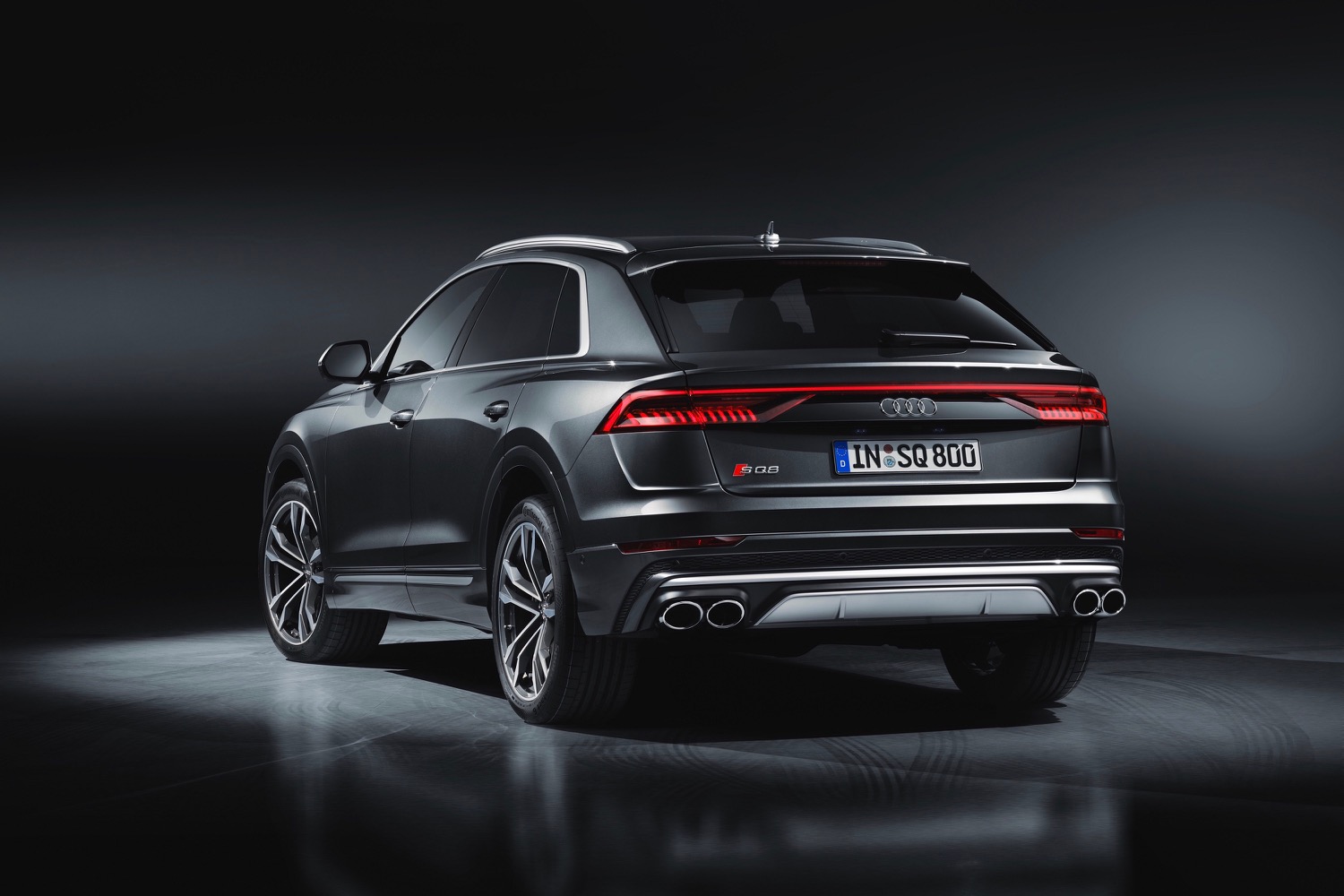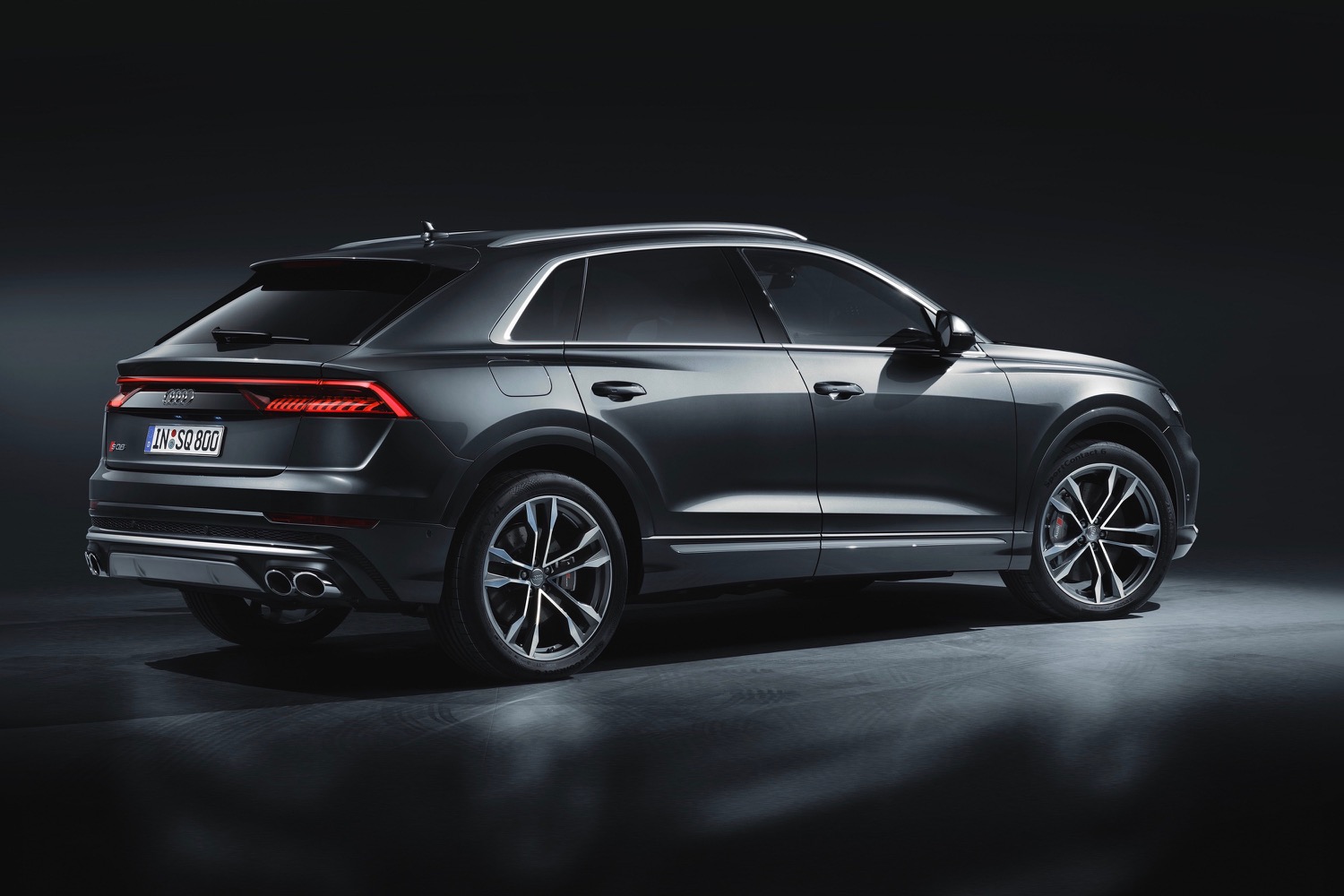Audi and its parent, Volkswagen, are done with diesel in the United States, but not in Europe. The Audi SQ8 TDI is a performance version of the Q8 SUV that shows diesel can be quick. Just don’t expect it to end up in U.S. showrooms anytime soon.
What are we in the States missing? The SQ8 packs a 4.0-liter twin-turbocharged diesel V8 that makes 429 horsepower and 664 pound-feet of torque. Power is channeled to all four wheels through an eight-speed “tiptronic” automatic transmission. Audi also threw in a 48-volt mild-hybrid system to improve fuel efficiency. It allows the SQ8 TDI to coast with the engine off in certain situations, and enables a more aggressive engine start-stop system.
When the driver isn’t concerned about efficiency, Audi claims the SQ8 TDI will do 0 to 62 mph in in 4.8 seconds. That’s 1.1 seconds quicker than a gasoline Q8. Despite its extra power and sportier mission, the SQ8 TDI is still electronically limited to 155 mph — just like standard Q8 models. The SQ8 TDI gets standard active air suspension, which can alter the ride height by up to 3.5 inches, while the Quattro all-wheel drive system has a standard power split of 40/60 front to rear.
In the U.K., Audi will also offer a Vorsprung model with additional chassis upgrades. A “sport” differential modulates torque distribution between the rear wheels, which should liven up the handling. Vorsprung models also get all-wheel steering, which turns the rear wheels in the opposite direction of the front wheels at low speeds to improve maneuverability, and in the same direction as the front wheels at high speeds to improve stability. Finally, an active roll stabilization system uses electric motors to manipulate the antiroll bars. Similar to the system used by Audi cousin Bentley, it’s designed to counteract body roll in corners without compromising ride quality.
As with other Audi S models, design differences between the SQ8 TDI and the base Q8 are fairly subtle. A matter silver grille is the main exterior change, while the interior gets mostly black upholstery and trim, with the option for some carbon fiber pieces. Like the base Q8, the SQ8 TDI gets an elaborate MMI infotainment system with two large touchscreens and a digital instrument cluster.
The Volkswagen diesel scandal eliminated any possibility of the Audi SQ8 TDI coming to the U.S. But there are rumors that a gasoline SQ8 may be sold here in its place. Audi is also rumored to be working on an even sportier RS Q8 model. It’s biggest competition will be other high-performance Volkswagen Group SUVs, including the Bentley Bentayga, Lamborghini Urus, and Porsche Cayenne.










